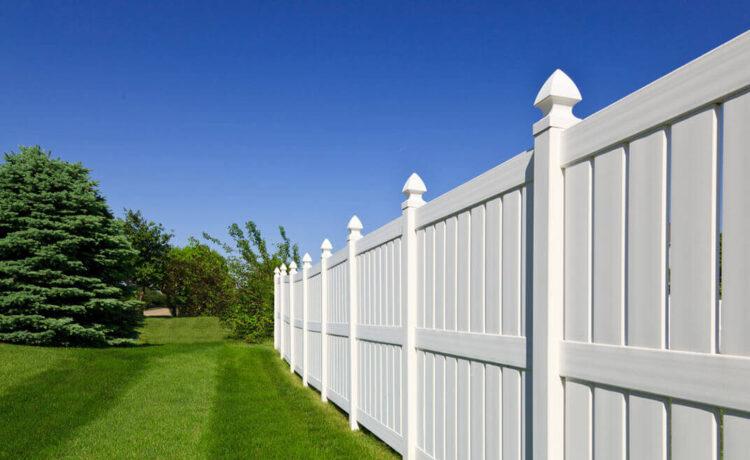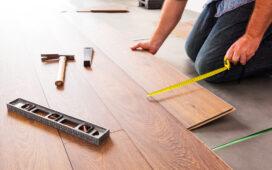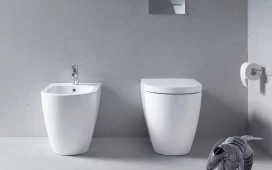Installing a fence around your Leeds property not only adds security and privacy but also enhances its overall beauty. However, like any other outdoor feature, a fence requires regular maintenance to ensure its longevity and preserve its aesthetic appeal. In this blog post, we will provide you with a comprehensive guide on how to maintain your Leeds fence. From cleaning and repairing to protecting and staining, these tips will help you keep your fence in excellent condition for years to come, ensuring both its durability and visual charm.
Regular Cleaning
Regular cleaning is essential to prevent dirt, grime, and mould from accumulating on your fence. Here’s a step-by-step guide on how to clean different fence materials:
Wood Fences
- Start by removing any loose debris using a brush or broom.
- Mix a solution of mild detergent and warm water.
- Scrub the fence with a soft-bristle brush, paying attention to areas with stubborn stains.
- Rinse the fence thoroughly with a hose or pressure washer.
- Allow the fence to dry completely before applying any treatments or finishes.
Vinyl Fences
- Rinse the fence with a hose to remove loose dirt and debris.
- Mix a solution of mild soap and warm water.
- Use a soft cloth or sponge to clean the fence, working from the top down.
- Rinse the fence thoroughly to remove any soapy residue.
- Allow the fence to air dry.
Metal Fences
- Remove loose dirt and debris using a brush or broom.
- Prepare a solution of warm water and mild detergent.
- Scrub the fence with a soft brush or sponge.
- Rinse the fence thoroughly to remove any soap residue.
- Dry the fence with a clean cloth to prevent water spots.
Repairing Damage
Regular inspection is crucial to identify any damages or signs of wear and tear on your fence. Addressing repairs promptly can prevent further deterioration and extend the lifespan of your fence. Here are some common fence repairs you may encounter:
Wood Fences
- Replace any broken or rotten boards.
- Hammer in loose nails or screws and tighten them.
- Fill any cracks or holes with wood putty and sand the area smooth.
- Apply a protective sealant or paint to the repaired sections.
Vinyl Fences
- Replace any broken or cracked vinyl panels.
- Secure loose or sagging sections.
- Clean and repair any damaged gate mechanisms.
- Use vinyl patch kits for smaller repairs, following the manufacturer’s instructions.
Metal Fences
- Replace any rusted or corroded sections.
- Tighten loose screws or bolts.
- Repair any bent or damaged panels.
- Apply rust-resistant paint or coating to protect the metal.
Protecting from the Elements
The unpredictable weather in Leeds can take a toll on your fence. Protecting it from the elements is crucial to maintaining its longevity. Here’s how to shield your fence from different weather conditions:
Rain and Moisture
- Apply a waterproof sealant or paint to wood fences to prevent water absorption.
- Ensure proper drainage around the fence to avoid water pooling.
- Regularly inspect and repair any areas that may be prone to water damage.
B. Sun Exposure
- Apply a UV-protective finish or stain to wood fences to prevent fading and discoloration.
- Consider using a shade sail or planting tall shrubs or trees to provide additional shade.
Freezing Temperatures
- Ensure proper installation of the fence posts below the frost line to prevent heaving.
- Protect metal fences from corrosion by applying a rust-resistant paint or coating.
Staining and Finishing
Applying a stain or finish to your fence not only enhances its appearance but also provides additional protection against the elements. Here’s how to stain and finish different types of fences:
Wood Fences
- Clean the fence thoroughly and allow it to dry.
- Sand any rough or splintered areas.
- Apply a wood preservative to protect against rot and insects.
- Use a brush, roller, or sprayer to apply a coat of stain or paint.
- Follow the manufacturer’s instructions regarding drying times and additional coats.
B.Vinyl Fences
- Clean the fence and ensure it is completely dry.
- Apply a vinyl-specific paint or primer if you wish to change the colour.
- Use a brush or roller to apply a coat of paint or stain.
- Allow the fence to dry completely before applying additional coats if necessary.
Metal Fences
- Remove any rust or flaking paint using a wire brush or sandpaper.
- Apply a rust converter to prevent further corrosion.
- Use a brush or spray paint to apply a rust-resistant paint or primer.
- Allow the paint to dry completely before applying a second coat if needed.
Regular Inspections
Regularly inspecting your fence allows you to identify any potential issues before they escalate. Here’s what to look for during your inspections:
- Loose or damaged boards, panels, or posts
- Signs of rot, mould, or insect infestation
- Rust or corrosion on metal fences
- Loose or damaged gate hinges and latches
- Cracked or broken vinyl panels
Maintaining your Leeds fence is essential to ensure its longevity and preserve its beauty. By following Leeds fencing company maintenance tips, including regular cleaning, prompt repairs, protection from the elements, and staining and finishing when necessary, you can keep your fence in excellent condition for years to come. Remember, a well-maintained fence not only enhances the aesthetic appeal of your property but also provides security and privacy, making it a worthwhile investment in the long run. So, dedicate some time and effort to maintain your Leeds fence, and you’ll reap the rewards of a beautiful and enduring outdoor space.











